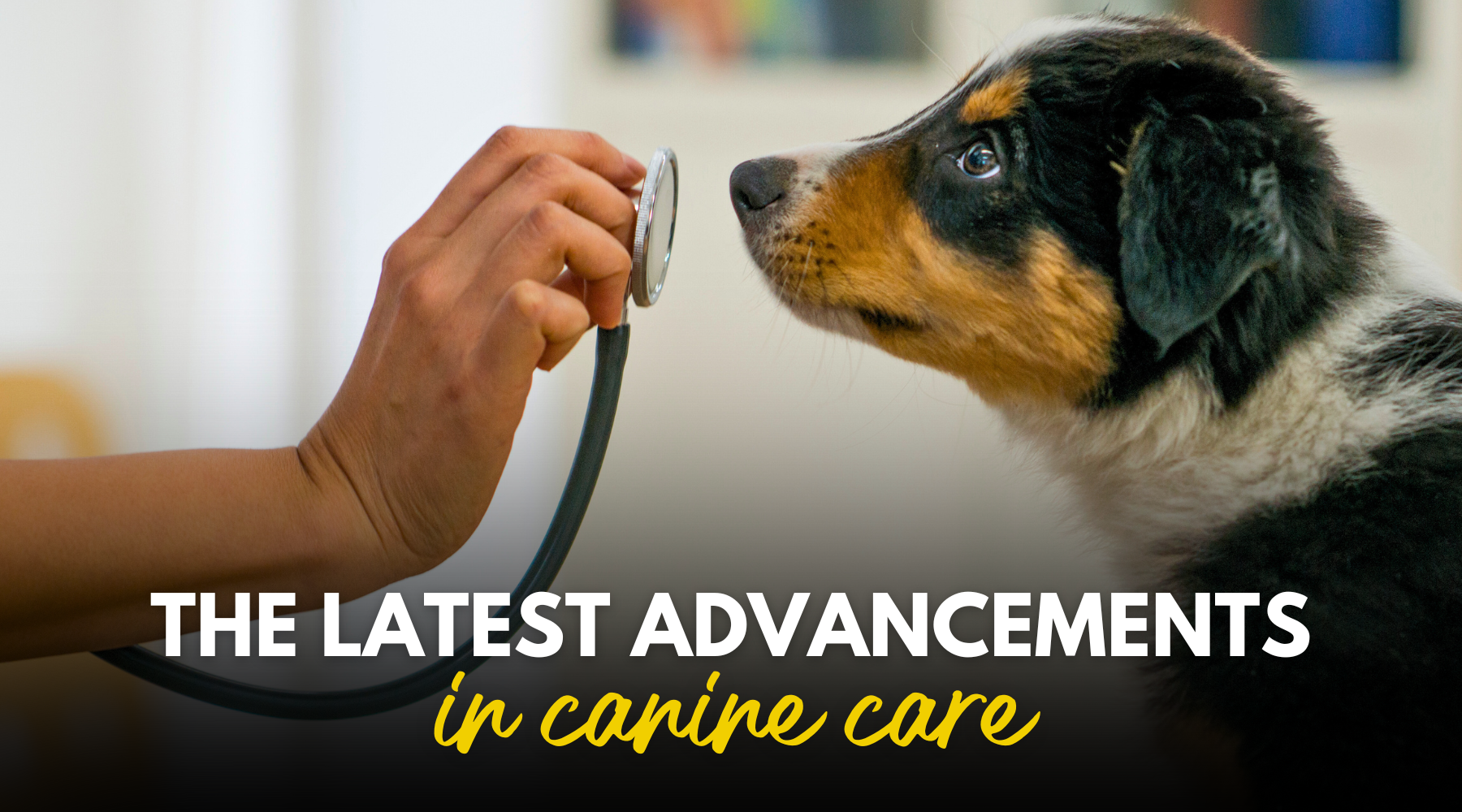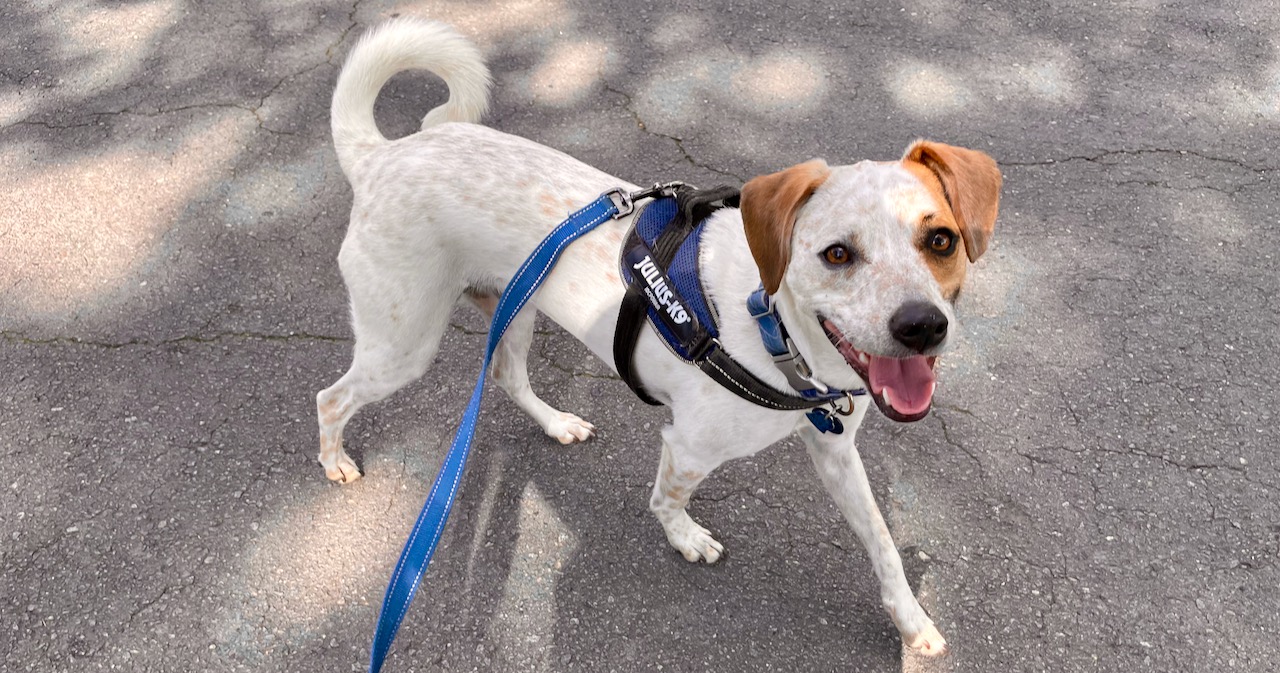I accidentally punished my dog’s behavior with a wad of cotton.
Lewis and I are participating in Dr. Mindy Waite’s husbandry study on ear cleaning. The goal of the study is to be able to wipe the dog’s ear with some cleaning solution on a cotton ball while he happily cooperates.
The protocol starts with training a chin rest. We completed the steps for the chin rest in my lap on a little towel (see below), then I proceeded to the steps of lifting his ear, bringing my other hand close to his ear while it was lifted, moving a dry cotton ball toward his ear, then touching the cotton to the inside of the ear flap.
For each of these steps, he needed to maintain his position while I performed the task and not chain in other undesirable behaviors before putting his chin down, such as pawing at me or vocalizing. (Yes, both happened.)
When I performed the step where I touched the cotton ball to the inside of his ear, he started to dodge away after the touch. I was able to reinforce a few, but most didn’t meet criteria. I did two brief sessions of this as the rate of reinforcement dropped, then I stopped and regrouped with Dr. Waite.
We agreed I would back up a step, to a step that didn’t involve touching his ear. In this step, I brought the cotton ball to within one inch of his ear without touching it.
But the previous sessions had created a behavior change through an aversive event. Here is the fallout.
I sat down in the chair I always use, readied the cotton, and put the small towel that functions as a chin target in my lap. .
• Lewis approached the towel and paused
• He put his chin down
• When I reached to lift his ear, he flinched away
• He lowered his chin again, I lifted his ear, and brought the cotton ball to about 1 inch from his ear
• I clicked and treated as he pulled quickly away (oops, not good timing!)
• He started to lower his chin, then dodged away as I reached for his ear with one hand and the cotton ball with the other
• He put his chin down once more, then quickly lifted it away
• Then, while still standing in front of me, he turned his head 90 degrees to his right
• Then he turned his head 90 degrees to his left
• He looked at me
• He turned to his right again
• He walked away
• He walked around, mostly off camera, for 24 seconds
• He put his paws up on a table, I cued him to get down, and he did
• He sniffed around for 15 more seconds, then headed back to me
• He put his chin on the towel but immediately lifted his head
• He looked hard to the right and walked away again
• He returned, put his chin down, immediately picked it up, licked his lips, and looked away
• He sniffed and licked his anus
• He sniffed and licked his anus from the other side
• He walked a few steps away and did another anal check
• He came over to me and nuzzled my hand holding the cotton (thanks for doing that right after licking your butt, Lewis)
• He put his chin down on the towel, I lifted his ear, brought the cotton ball close, and clicked/treated
• I ended the session (something I should have done much earlier)
Negative Reinforcement
The list above is a roll call of escape and avoidance behaviors. These behaviors got negatively reinforced because they released him from my approach to his ear. Also, this avoidance was highly unusual for Lewis. I’ve never seen him leave a training session before. The touch of the cotton the previous day was so aversive he couldn’t even tolerate the proximity of it during this session.
But there was a more subtle, even more important result.
Positive Punishment
Lewis’ chin rest was positively punished by the soft touch of the cotton ball to the inside of his ear. How do I know that? Here’s my analysis.
This preceded the big-time avoidance session I describe above.
Antecedent: I put the towel in my lap, which is the cue for him to put his chin on it
Behavior: Lewis put his chin on the towel
Consequence: I lifted his ear and touched the inside with a dry cotton ball
I would normally put a prediction here. I’m not because I didn’t make one at the time. But I sure found out.
Lewis’ rate of offering the chin rest after that experience dramatically decreased. Before this step, Lewis had been fluently performing repeated chin rests for days in our sessions. And during this “aftermath” session I got only two, with high latency and the fidgety, avoidant behaviors I described.
Some of you will be wondering about another possibility. Good thinking! Positive punishment is not the only mechanism by which a behavior might decrease. There are two other well-known possibilities (and some less common ones). The well-known ones are negative punishment and extinction.
I can’t think of a way that negative punishment could be the process involved here. I was not contingently removing an appetitive stimulus. (Check out this article if you need a brush-up on the processes of operant learning.) But we need to consider extinction, because the rate of reinforcement did drastically drop.
Remember above I mentioned that part of the criteria for this husbandry task was for Lewis not to chain in undesirable behaviors like pawing me or vocalizing? Those started off as extinction-related behaviors. They happened when he was frustrated that I had raised criteria too fast and he wasn’t accessing reinforcement at the former rate.
I know what extinction-related behavior looks like from Lewis, and this wasn’t it.
That Innocent Little Cotton Ball

I didn’t start out to be misleading about the cotton, but I ended up burying the lede about it a little. Here is the lede: Touching a cotton ball directly on the opening of the ear canal is LOUD. Cotton balls look soft and innocuous, and touching them to lots of places on the body could be unremarkable. But the sound of the cotton touching his ear was startling and unpleasant to Lewis
Dr. Waite kept that in mind as she gave us some new steps to perform. They separated out the sound from the touch. We went pretty far back in the process, because this strong avoidant response was so unusual for Lewis. I’m pleased to report that we have worked back up to touching his ear with the cotton ball and he has decided that’s OK!
Watch the Dog and Film Your Reps
There’s a lesson here. You don’t need a shock or prong or choke collar for positive punishment. I think we concentrate way too much on tools sometimes. I don’t use any such collars, I don’t jerk on the leash, nor do I use front attach harnesses or head halters, but frankly, those make up a pretty low bar. It’s a baseline. It’s not challenging or difficult not to use tools that hurt. What I find much more challenging is noticing other stimuli that are unexpectedly aversive, such something very soft applied to the wrong place the wrong way.
Lewis was not hurt, harmed, or traumatized by the cotton ball, as he would have been with a harsher method. But he was unhappy with the situation, which is the opposite of what I want. If I hadn’t been filming, I might never have known just how unhappy he was. And if I hadn’t been tracking reps, I might not have noticed that the chin rest got punished. I’m glad I did know, even if a little late, because I could have made the situation must worse had I persevered.
A wise friend once described the type of training positive reinforcement trainers aim for as “training that is fun for the learner.” It may sound simplistic, but that description is an elegant and direct description of my goals and beliefs as a trainer. We can say Lewis’ chin rest was positively punished. We can also say Lewis obviously wasn’t having fun. And let me be clear: I want Lewis to be having fun because of the training, not despite it.
Lewis is a challenging dog for husbandry tasks. I am still, after more than a year, clipping his nails while he licks peanut butter. When I dry him with a towel, I must parcel out kibble with one hand while I do it, because otherwise, he descends into overwrought wiggling and mouthing. I plan to train these husbandry tasks instead of managing them with distractions, but I haven’t gotten there.
Lewis’ general discomfort with husbandry was a large part of what prompted me to join Dr. Waite’s study. It is incredibly helpful to me to have a structured approach and her expert counsel. I hope we don’t blow the bell curve!
Copyright 2023 Eileen Anderson




